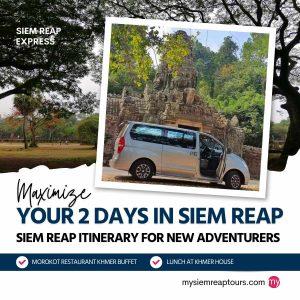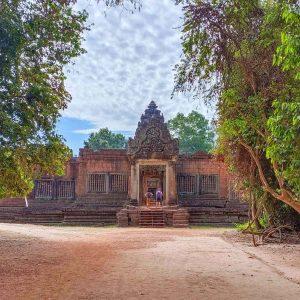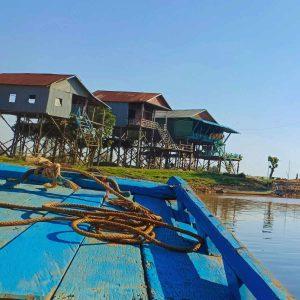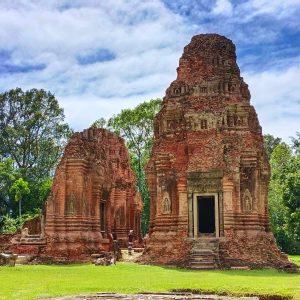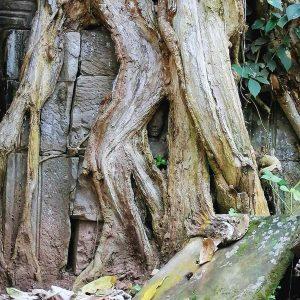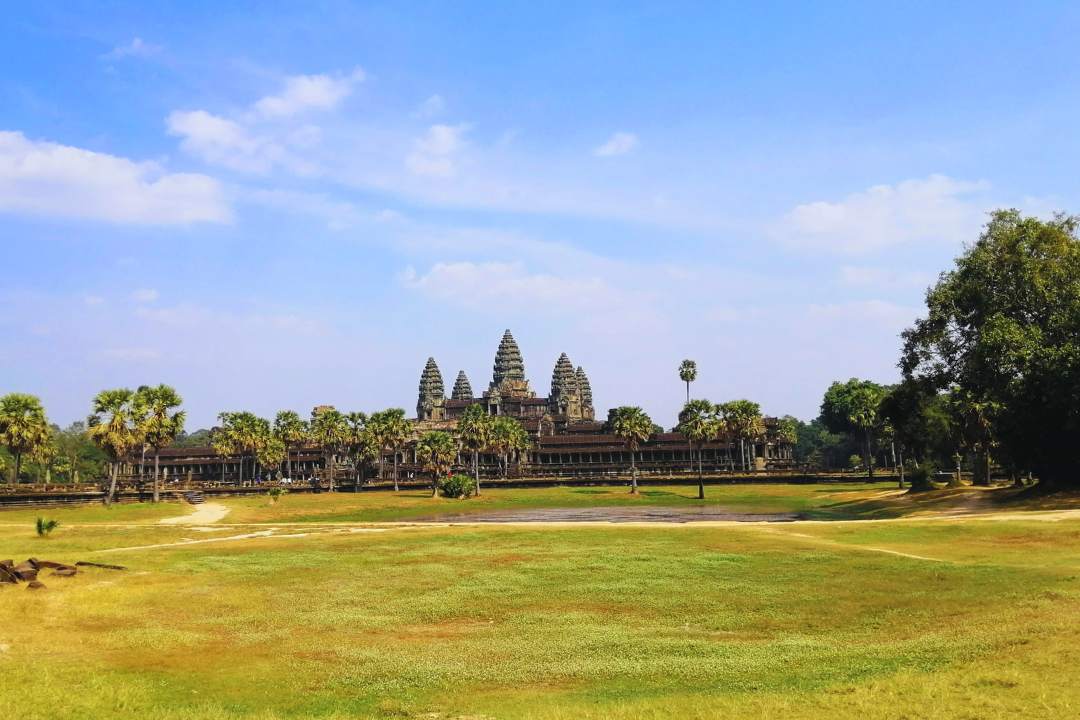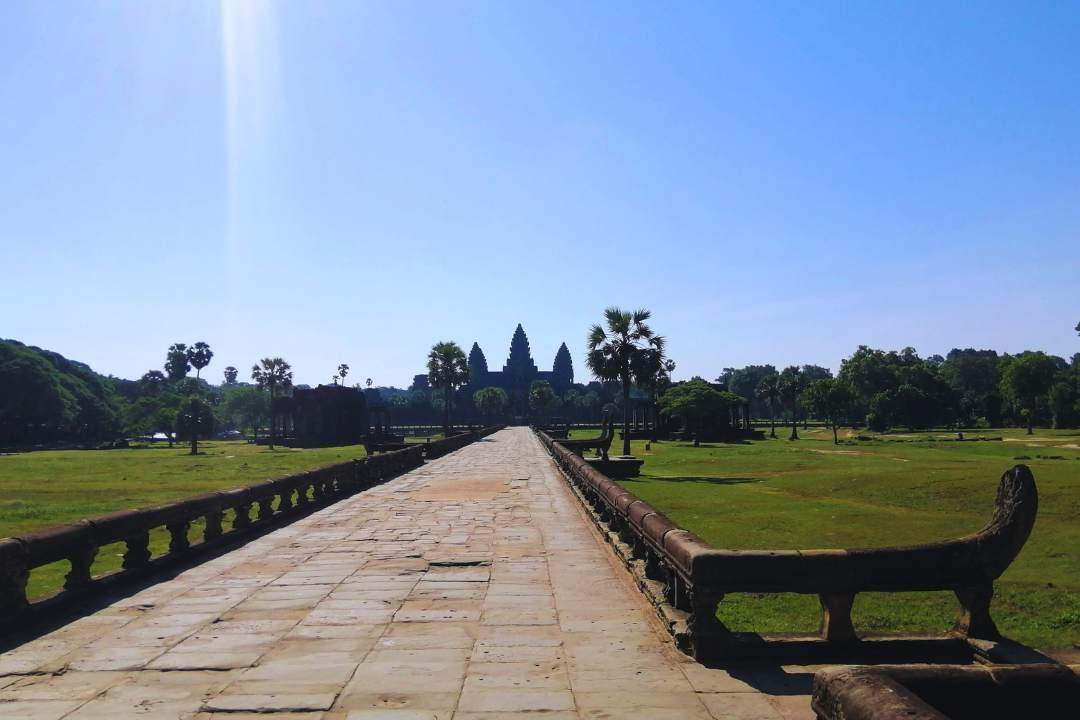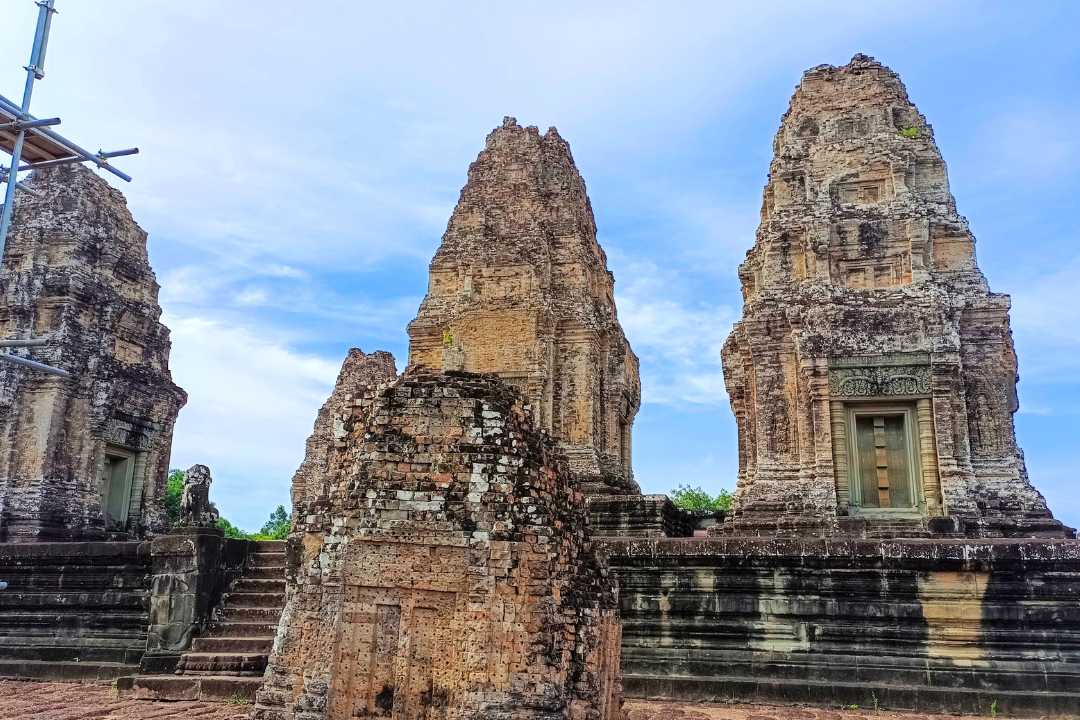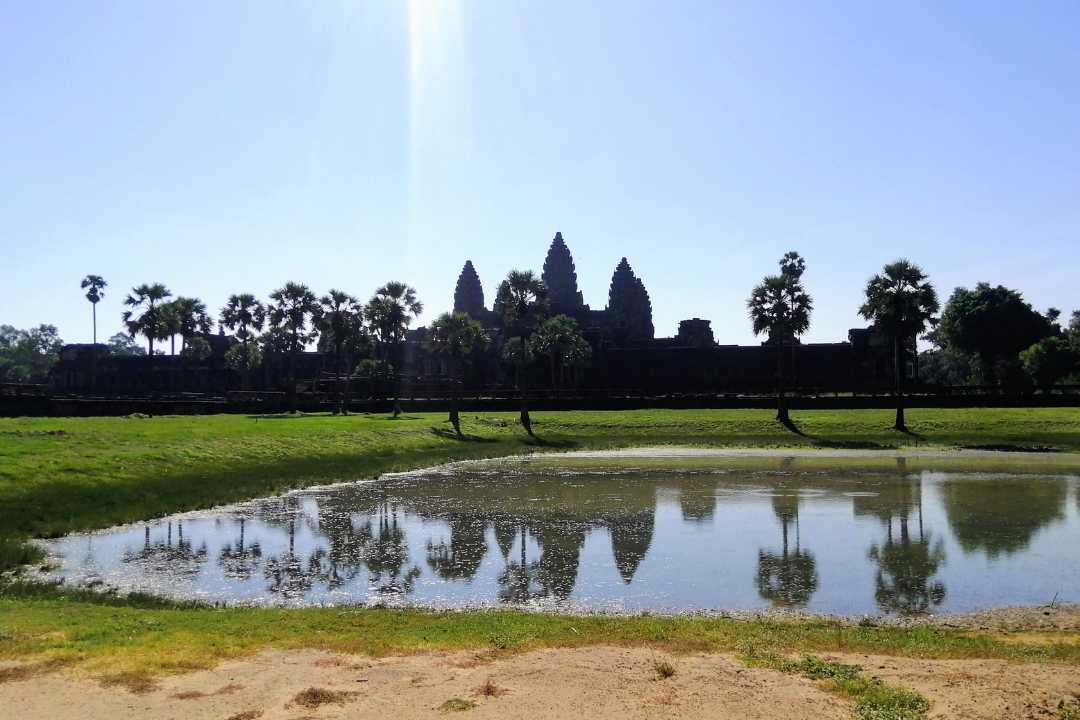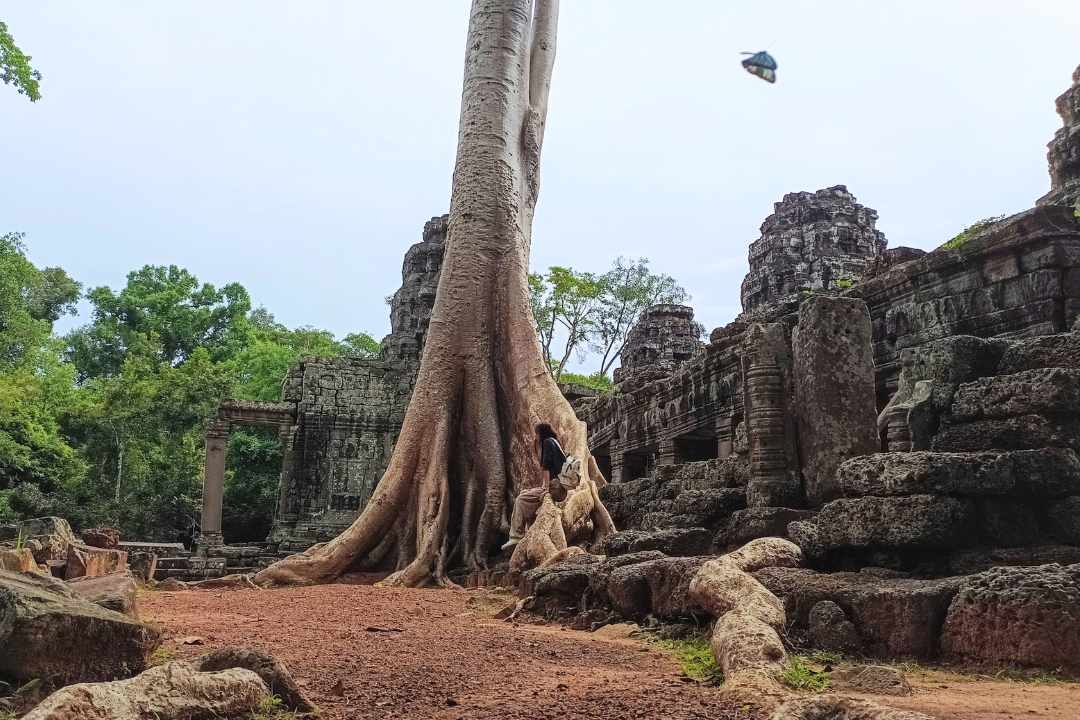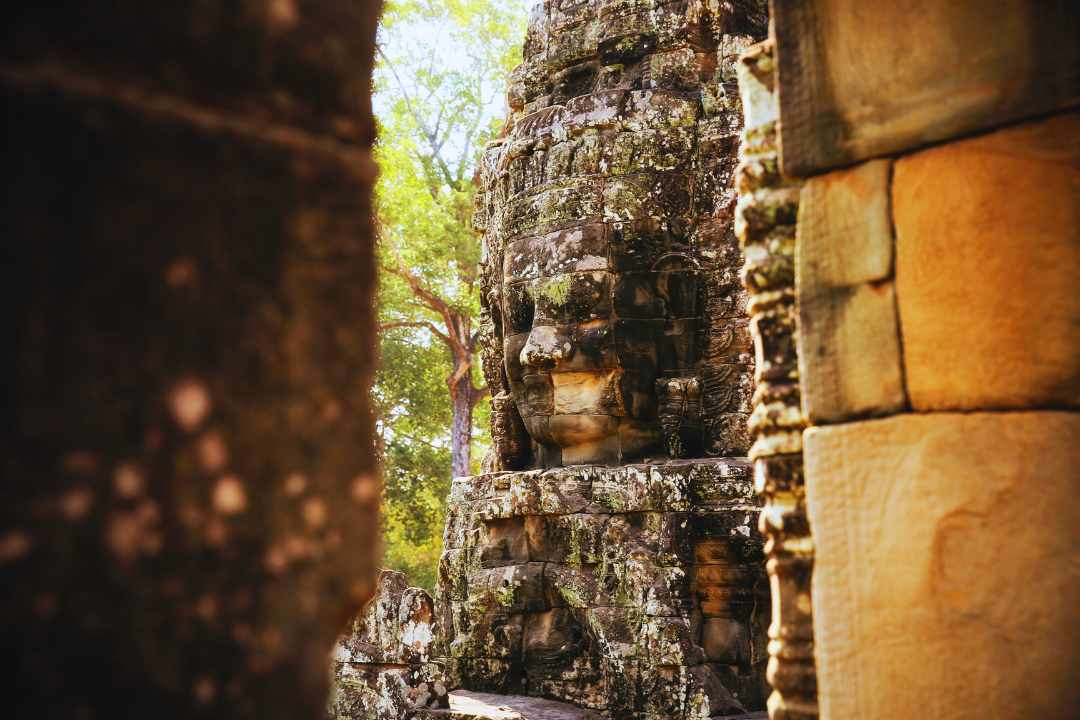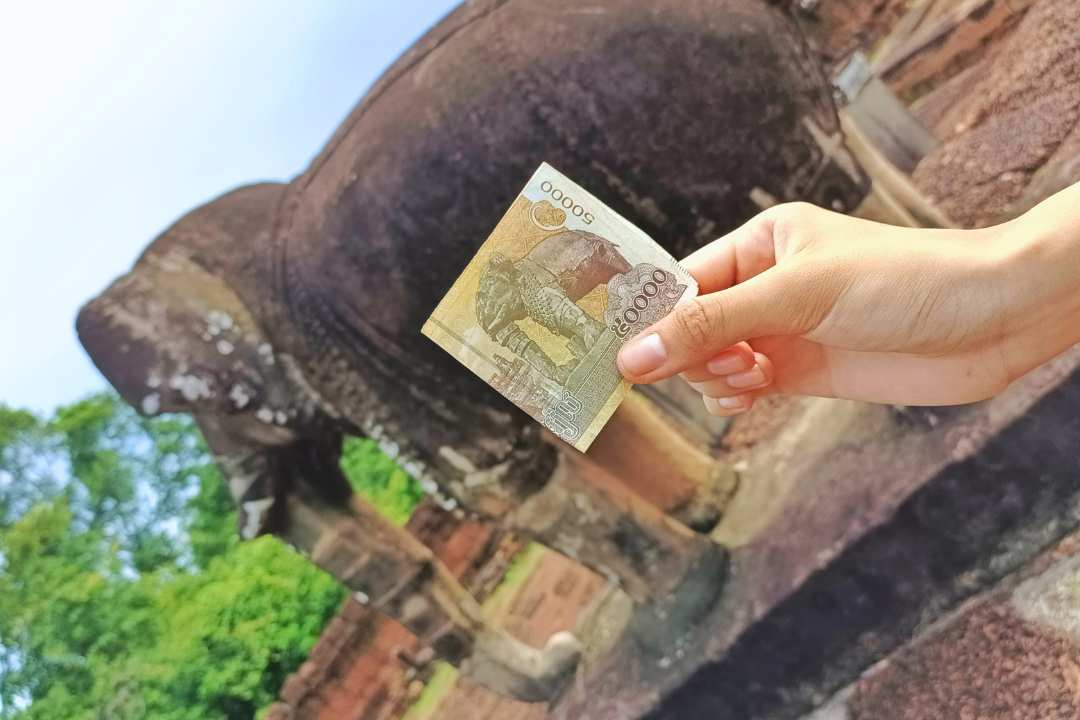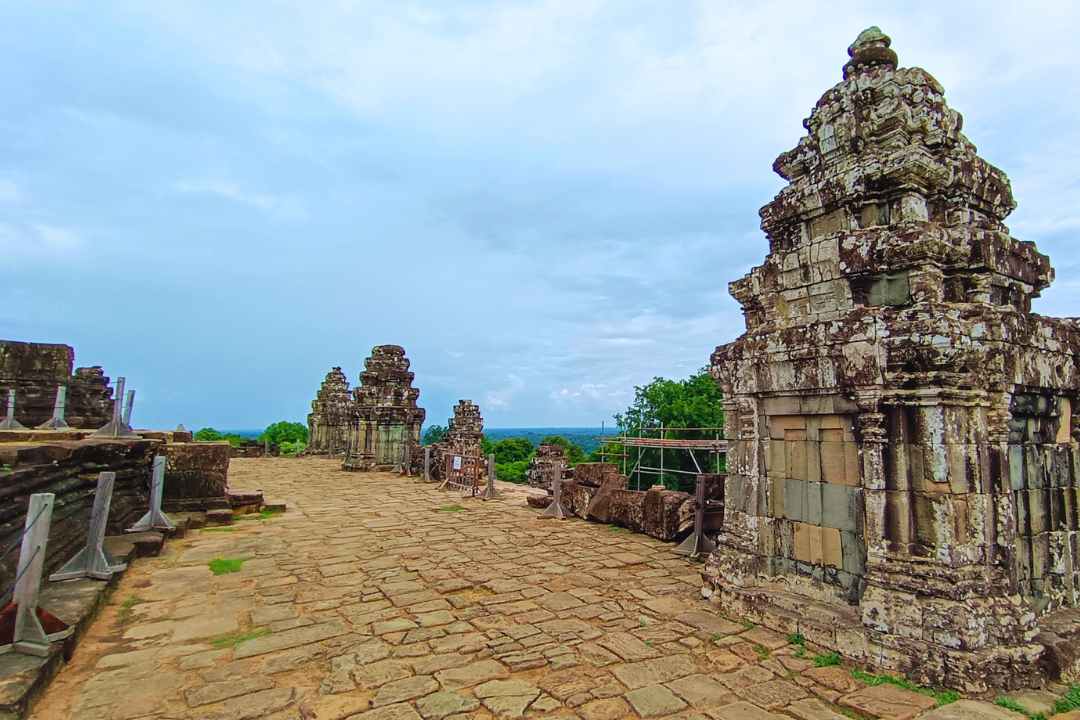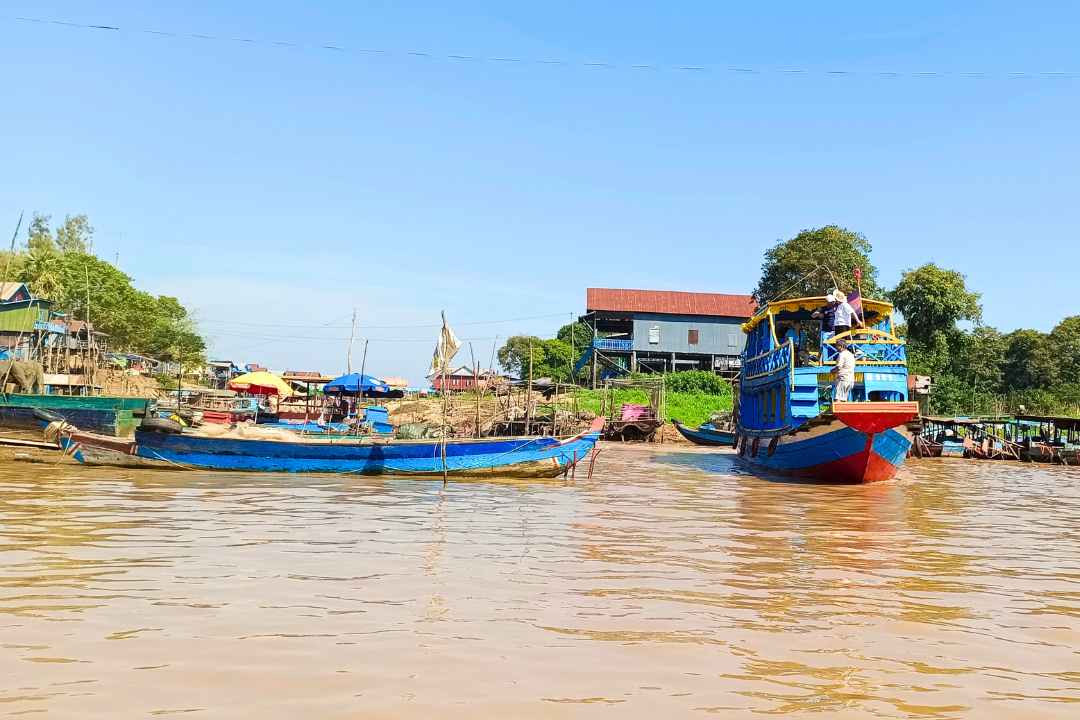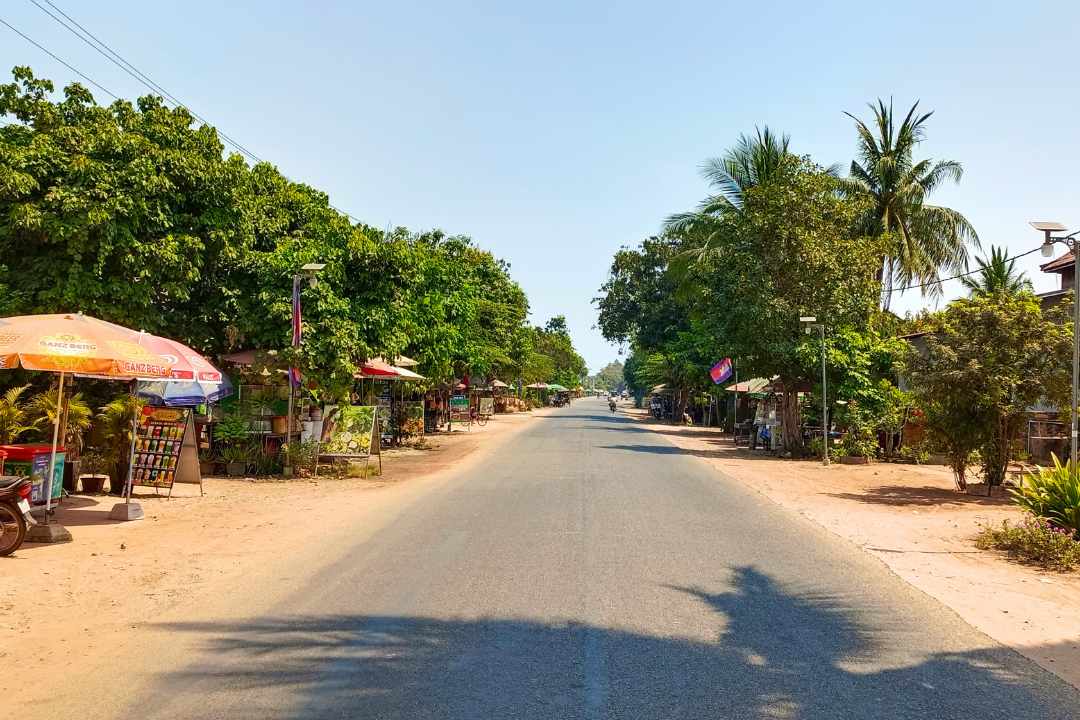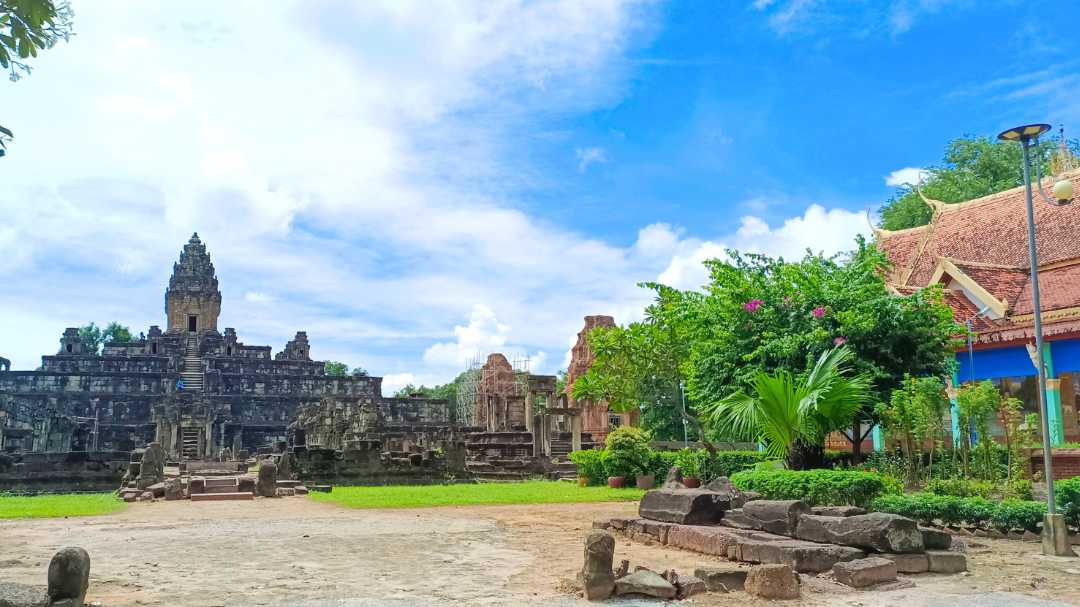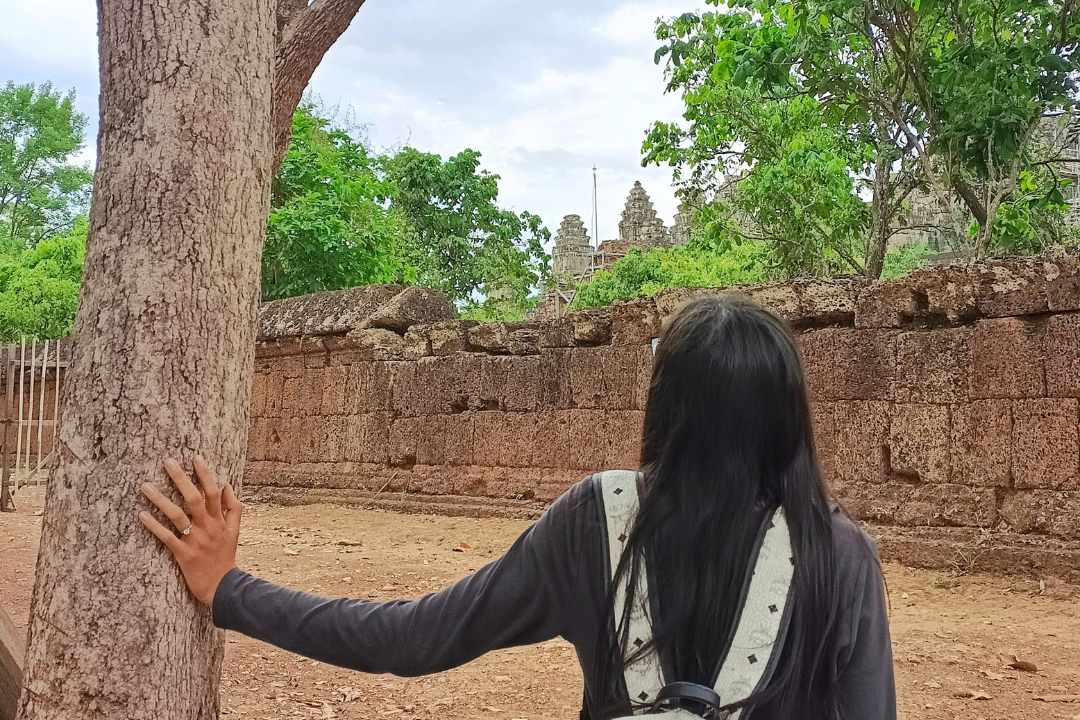Table of Contents
ToggleThe Spiritual Side of Angkor Exploring Buddhism and Hinduism in Siem Reap
Have you ever wondered about the spiritual side of the Angkor temples in Siem Reap, Cambodia? Beyond their awe-inspiring beauty and intricate design, these ancient structures also have deep ties to two major world religions: Buddhism and Hinduism. Join us as we delve into the history, symbolism, and beliefs behind these stunning masterpieces.
In this article, we’ll explore the origins of Buddhism and Hinduism in Southeast Asia and how they influenced the construction of the Angkor temples. We’ll examine the unique features and iconography of these religious traditions and how they are reflected in the temples’ intricate carvings and sculptures. We’ll also take a look at the contemporary practice of Buddhism in Cambodia and the role of the temples in modern spiritual life.
To guide us on this journey, we’ll be drawing on the expertise of the leading scholars of Southeast Asian religions and author of several books on the subject. With his insights, we’ll gain a deeper understanding of the rich cultural heritage and spiritual significance of the Angkor temples.
So, are you ready to uncover the spiritual side of Angkor and explore the intricate connection between Buddhism and Hinduism in Siem Reap?
Let’s begin!
To understand the spiritual side of Angkor, we need to delve into its history. Angkor was the capital of the Khmer Empire, which ruled over Southeast Asia from the 9th to the 15th centuries.
During this time, the Khmer Empire was one of the most powerful and influential civilizations in the world, with a thriving economy, sophisticated infrastructure, and a rich cultural heritage.
Hinduism and Buddhism in Angkor
When the Khmer Empire was first established, its rulers practiced Hinduism, a religion that originated in India. As a result, many of the temples and monuments in Angkor were dedicated to Hindu gods and goddesses.
- One of the most impressive examples of Hindu architecture in Angkor is the temple of Angkor Wat, which was built in the 12th century by King Suryavarman II. The temple is dedicated to the Hindu god Vishnu and is decorated with intricate carvings that tell stories from Hindu mythology.
Over time, the Khmer rulers began to embrace Buddhism, a religion that originated in India and was introduced to Southeast Asia by missionaries and traders. As a result, many of the later temples and monuments in Angkor were dedicated to Buddhist principles and figures.
- One of the most significant examples of Buddhist architecture in Angkor is the Bayon Temple, which was built in the late 12th century by King Jayavarman VII. The temple is decorated with over 200 stone faces of the Buddha, each one unique and imbued with its own character and expression.
The Blending of Religions
Despite the clear divide between Hinduism and Buddhism in Angkor, there are also many examples of the blending of these two religions.
For example, the temple of Banteay Srei, which was built in the 10th century, contains carvings that depict both Hindu and Buddhist scenes. Similarly, the temple of Ta Prohm, which was built in the late 12th century, contains carvings that depict scenes from both Hindu and Buddhist mythology.
The Spiritual Significance of Angkor
For both Hindus and Buddhists, Angkor is a site of great spiritual significance.
For Hindus, the temples of Angkor are a symbol of their devotion to the gods and goddesses of Hindu mythology.
For Buddhists, the temples of Angkor are a reminder of the importance of compassion, mindfulness, and enlightenment.
Today, visitors to Angkor can witness the deep spiritual significance of this site by observing the daily rituals and ceremonies that take place at the temples.
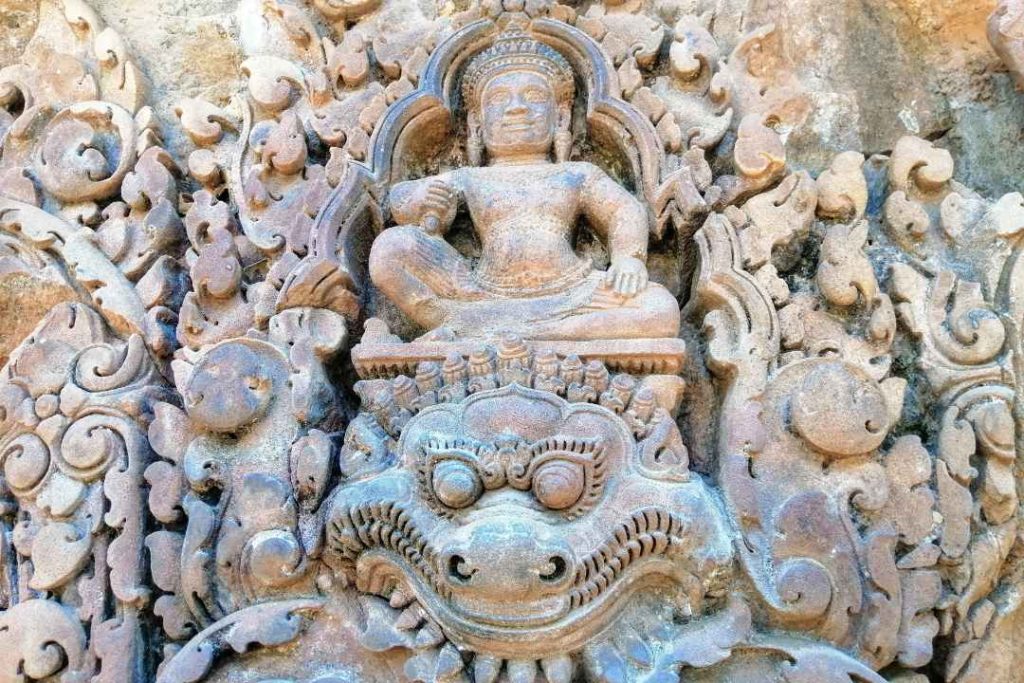
Exploring the Spiritual Side of Angkor
If you want to explore the spiritual side of Angkor, there are several ways to do so. One option is to hire a guide who can take you on a tour of the temples and explain their significance in detail.
Another option is to attend a meditation or yoga retreat that takes place at one of the temples. This is a unique way to connect with the spiritual energy of Angkor and gain a deeper understanding of Buddhism and Hinduism.
In addition to the temples themselves, there are also several spiritual practices that are unique to Siem Reap. For example, many visitors choose to participate in a traditional water blessing ceremony, which involves having water poured over your head by a Buddhist monk or nun. This is believed to wash away negative energy and bring good luck and prosperity.
Another way to connect with the spiritual side of Siem Reap is to visit one of the many meditation centers in the area. These centers offer classes and workshops on mindfulness, compassion, and other Buddhist and Hindu principles. By learning these practices, you can gain a deeper understanding of the spiritual significance of Angkor and its role in these religions.
Are you ready to embark on a journey of discovery and enlightenment through the ancient temples of Angkor?
Look no further than our Private Angkor Wat Sunrise Tour!
This tour is the perfect opportunity for those who want to explore the spiritual side of Angkor in a way that is both educational and experiential.
Our expert guides will take you on a journey that will enhance your understanding of the rich cultural heritage of Siem Reap, while also providing a unique and meaningful travel experience that you will never forget.
What sets our Private Angkor Wat Sunrise Tour apart is that it offers an immersive and unique travel experience that goes beyond the typical tourist sites.
Not only will you learn about the history and significance of the temples, but you will also have the opportunity to participate in spiritual practices and rituals that are an integral part of daily life in Siem Reap.
During the tour, you will gain insights into the similarities and differences between Buddhism and Hinduism, two of the world’s most influential religions. You will be able to appreciate the intricate architecture and artistry of the temples on a deeper level, and gain a deeper understanding of the culture and traditions of Siem Reap.
As a tour planner, I highly recommend this tour to anyone interested in exploring the spiritual side of Angkor. It is a once-in-a-lifetime experience that will leave you feeling enlightened and transformed.
Why should you choose to explore the Spiritual Side of Angkor?
Here are some arguments from multiple diverse perspectives for you!
- For the spiritual seeker: This tour provides an opportunity to deepen your understanding of Buddhism and Hinduism, two of the world’s most influential religions, and to connect with their practices in a meaningful way.
- For the cultural enthusiast: Siem Reap’s cultural heritage is steeped in spirituality, and exploring the Spiritual Side of Angkor will provide valuable insights into the traditions and beliefs that have shaped the region for centuries.
- For the history buff: The temples of Angkor are not just architectural marvels but also a testament to the history and culture of Southeast Asia. By exploring their spiritual significance, you will gain a richer understanding of the region’s past.
- For the art lover: The temples of Angkor are renowned for their intricate architecture and stunning artwork. By delving deeper into their spiritual significance, you will be able to appreciate their beauty on a whole new level.
- For the traveler seeking a unique experience: Exploring the Spiritual Side of Angkor goes beyond the typical tourist sites and provides a meaningful and transformative travel experience that you will never forget.
- For the open-minded explorer: This tour offers an opportunity to learn about and appreciate the similarities and differences between Buddhism and Hinduism, providing valuable insights into the diversity of human spirituality.
Here are some popular questions about The Spiritual Side of Angkor
- What is the main difference between Buddhism and Hinduism?
- What is the significance of the different types of Buddha statues?
- What do the different hand positions of Buddha statues signify?
- What is the significance of the different Hindu deities and their roles?
- Can I participate in a water blessing ceremony, in Siem Reap temples or Angkor temples, if I am not Buddhist?
Let's got through all of them!
What is the main difference between Buddhism and Hinduism?
Buddhism and Hinduism are two of the world’s oldest religions, and although they share some similarities, they have distinct differences in their beliefs and practices.
The main difference between Buddhism and Hinduism lies in their understanding of the self and the ultimate reality. In Hinduism, the ultimate reality is Brahman, an all-encompassing divine force that is present in everything, including individual souls or atman.
The ultimate goal of Hinduism is to achieve union with Brahman, known as moksha, through a process of reincarnation and karma.
In contrast, Buddhism rejects the concept of a permanent, unchanging self or soul. Buddha taught that the self is an illusion, and that everything in existence is impermanent and constantly changing. The ultimate goal of Buddhism is to achieve enlightenment or Nirvana, which is a state of liberation from suffering and the cycle of rebirth.
Another key difference between Buddhism and Hinduism is their approach to religious authority. In Hinduism, the authority comes from the Vedas and other sacred texts, as well as from the teachings of gurus and other spiritual leaders. In Buddhism, the authority comes from the teachings of Buddha and the Buddha’s understanding of the nature of reality.
Despite these differences, there are also some similarities between the two religions. For example, both Buddhism and Hinduism emphasize the importance of compassion and non-violence, and both encourage the practice of meditation as a means of achieving spiritual growth.
In conclusion, the main differences between Buddhism and Hinduism lie in their understanding of the self and ultimate reality, their approach to religious authority, and their ultimate goals.
As a tour planner, we can provide customized tours that explore the religious and cultural heritage of Cambodia, including visits to important Buddhist and Hindu sites.
Our knowledgeable guides can provide insights into the similarities and differences between these two ancient religions, allowing you to gain a deeper understanding and appreciation of their respective traditions. Contact us today to book your personalized tour of Siem Reap.
What is the significance of the different types of Buddha statues?
Buddha statues are a common sight in Buddhist temples and homes around the world. They come in different styles, materials, and poses, each with its own unique significance and meaning.
Understanding the symbolism behind the different types of Buddha statues can deepen one’s appreciation of Buddhist art and culture.
Here is an overview of the significance of the different types of Buddha statues:
- Postures: Buddha statues are often depicted in different postures, each with its own significance. For example, the sitting Buddha represents meditation, while the standing Buddha represents protection and fearlessness. The reclining Buddha represents the Buddha’s passing into Nirvana.
- Hand gestures: Buddha statues often have different hand gestures or mudras, which symbolize different things. For example, the Abhaya mudra (fearless gesture) represents protection, while the Dhyana mudra (meditation gesture) represents concentration and focus. The Bhumisparsha mudra (earth-touching gesture) represents the moment when the Buddha achieved enlightenment.
- Facial expressions: Buddha statues often have different facial expressions, which convey different emotions or states of mind. For example, the smiling Buddha represents happiness, while the serious or contemplative Buddha represents wisdom.
- Materials: Buddha statues can be made from a variety of materials, each with its own symbolism. For example, stone statues represent stability and strength, while bronze statues represent beauty and elegance. Wooden statues represent warmth and naturalness.
- Colors: Buddha statues can also come in different colors, which have different meanings. For example, gold represents enlightenment and purity, while white represents mental purity and spiritual perfection. Red represents the Buddha’s energy and life force.
In summary, the different types of Buddha statues have different meanings and significance, from the posture and hand gestures to the materials and colors used.
These statues are not only beautiful works of art, but they also serve as a reminder of the Buddha’s teachings and the values of Buddhism, such as compassion, wisdom, and inner peace.
If you are interested in learning more about Buddhism and its rich cultural heritage, consider taking a guided tour of Buddhist temples and sites in Cambodia.
Next…
What do the different hand positions of Buddha statues signify?
Buddha statues come in various poses and hand positions, each conveying a particular meaning or message.
These hand positions are called mudras and are an essential part of Buddhist iconography. Here are some of the most common mudras and their significance:
- Abhaya Mudra: In this mudra, Buddha’s right hand is raised to shoulder level with the palm facing outward. It represents protection, fearlessness, and the dispelling of fear.
- Dharmachakra Mudra: This mudra is formed by touching the thumb and index finger to form a circle, with the other fingers pointing straight up. It represents Buddha’s first teaching of the Four Noble Truths and the Eightfold Path.
- Bhumisparsha Mudra: In this mudra, Buddha’s right hand is extended downward, with the palm facing inward and touching the ground. It represents Buddha’s enlightenment and his calling upon the earth to witness his triumph over ignorance.
- Varada Mudra: This mudra is formed by holding the right hand down with the palm facing outward. It represents charity, compassion, and granting wishes.
- There are many other mudras, each with its own significance and symbolism, and understanding them can enhance your appreciation of Buddhist art and culture.
Now let’s focus on the second question: What materials are used to make Buddha statues, and what is their significance?
Buddha statues can be made from a wide range of materials, including stone, metal, wood, and even plastic.
The choice of material can vary depending on the region, the time period, and the intended use of the statue. Here are some common materials and their significance:
- Stone: Stone is a popular material for outdoor statues due to its durability and natural appearance. Granite, marble, and sandstone are common stones used for Buddha statues, with each stone carrying its own unique texture and color.
- Metal: Metal statues are often used for indoor displays, and they can be made from bronze, brass, or copper. These statues can be intricate and detailed, with delicate engravings and intricate designs.
- Wood: Wood is a traditional material used in Southeast Asia, and it is often carved by skilled artisans to create lifelike and expressive Buddha statues. Different types of wood can be used to create different effects, such as teak for its durability and elegance.
- Plastic: Plastic Buddha statues are often mass-produced and sold as souvenirs, and they are affordable and easy to transport.
Buddha statues come in various poses and hand positions, each conveying a particular meaning or message.
These hand positions are called mudras and are an essential part of Buddhist iconography. Here are some of the most common mudras and their significance:
- Abhaya Mudra: In this mudra, Buddha’s right hand is raised to shoulder level with the palm facing outward. It represents protection, fearlessness, and the dispelling of fear.
- Dharmachakra Mudra: This mudra is formed by touching the thumb and index finger to form a circle, with the other fingers pointing straight up. It represents Buddha’s first teaching of the Four Noble Truths and the Eightfold Path.
- Bhumisparsha Mudra: In this mudra, Buddha’s right hand is extended downward, with the palm facing inward and touching the ground. It represents Buddha’s enlightenment and his calling upon the earth to witness his triumph over ignorance.
- Varada Mudra: This mudra is formed by holding the right hand down with the palm facing outward. It represents charity, compassion, and granting wishes.
There are many other mudras, each with its own significance and symbolism, and understanding them can enhance your appreciation of Buddhist art and culture.
Now let’s focus on the second question: What materials are used to make Buddha statues, and what is their significance?
Buddha statues can be made from a wide range of materials, including stone, metal, wood, and even plastic.
The choice of material can vary depending on the region, the time period, and the intended use of the statue. Here are some common materials and their significance:
- Stone: Stone is a popular material for outdoor statues due to its durability and natural appearance. Granite, marble, and sandstone are common stones used for Buddha statues, with each stone carrying its own unique texture and color.
- Metal: Metal statues are often used for indoor displays, and they can be made from bronze, brass, or copper. These statues can be intricate and detailed, with delicate engravings and intricate designs.
- Wood: Wood is a traditional material used in Southeast Asia, and it is often carved by skilled artisans to create lifelike and expressive Buddha statues. Different types of wood can be used to create different effects, such as teak for its durability and elegance.
- Plastic: Plastic Buddha statues are often mass-produced and sold as souvenirs, and they are affordable and easy to transport.
Buddha statues are an essential part of Buddhist art and culture, and understanding their significance and symbolism can enrich your travel experience in Cambodia.
What is the significance of the different Hindu deities and their roles?
As a tour planner of MySiemReapTours, I understand that travelers visiting Cambodia are often curious about the significance of the different Hindu deities and their roles.
Hinduism is a complex and diverse religion with many gods and goddesses, each with their unique qualities and attributes.
Here is an overview of the significance of the different Hindu deities and their roles:
- Brahma: Brahma is considered the creator of the universe in Hinduism. He is often depicted with four faces, representing the four Vedas, the ancient scriptures of Hinduism. Brahma is not as widely worshipped as other Hindu deities but is still important in the creation story of Hinduism.
- Vishnu: Vishnu is one of the most important Hindu deities and is often depicted as having blue skin. He is believed to have taken many different forms (or avatars) to protect the world from evil forces. Some of his most famous avatars include Rama and Krishna.
- Shiva: Shiva is known as the destroyer in Hinduism and is often depicted with a third eye, representing wisdom and insight. Shiva is also associated with fertility and regeneration and is often worshipped in the form of a lingam, a phallic symbol that represents his creative energy.
- Ganesh: Ganesh is a popular Hindu deity and is worshipped as the remover of obstacles. He is often depicted with the head of an elephant and a rotund belly. Ganesh is also associated with intellect and wisdom and is worshipped before the start of new ventures or journeys.
- Kali: Kali is a fierce and powerful Hindu goddess who is associated with death and destruction. She is often depicted with a tongue sticking out and a necklace of skulls. Kali is also associated with regeneration and rebirth and is worshipped by those seeking protection from evil forces.
These are just a few examples of the many Hindu deities and their roles.
Each deity has its unique qualities and significance in Hinduism, and understanding them can provide insight into the rich cultural heritage of India and other regions with a significant Hindu population.
In conclusion, the significance of the different Hindu deities and their roles is vast and complex, and each one has its unique attributes and qualities.
Can I participate in a water blessing ceremony, in Siem Reap temples or Angkor temples, if I am not Buddhist?
Yes, visitors of all faiths are welcome to participate in water blessing ceremonies in Siem Reap and Angkor temples. These ceremonies are a way to connect with the spiritual energy of the site and are believed to bring good luck and prosperity.
When participating in a water blessing ceremony, it’s important to show respect for the Buddhist beliefs and traditions that are being honored. Visitors are expected to dress modestly and remove their shoes before entering the temple. It’s also important to be mindful of your behavior and avoid disturbing other participants or the monks who are conducting the ceremony.
During the water blessing ceremony, a Buddhist monk or nun will pour water over your head while chanting prayers and mantras. This is believed to cleanse the body and soul, and bring good fortune and prosperity. Even if you don’t believe in the spiritual significance of the ceremony, it can be a meaningful and memorable experience that allows you to connect with the rich cultural heritage of Cambodia.
In Conclusion
The spiritual side of Angkor is an important aspect of Siem Reap’s cultural heritage.
By exploring Buddhism and Hinduism, you can gain a deeper understanding of the traditions, beliefs, and practices that have shaped the region for centuries.
Our tour offers a unique opportunity to explore the spiritual side of Angkor in a way that is both educational and experiential.
Our knowledgeable guides will take you on a journey of discovery and enlightenment, providing insights into the history and significance of the temples and spiritual practices.
You will also have the chance to participate in meditation and other rituals, allowing you to fully immerse yourself in the spiritual traditions of Siem Reap.
Now, do you see why a tour guide is so important on a Private Tour?
Featured
-
Unveil Angkor Premier 3-Day Private Tour with Temples, Sunsets, and Floating Villages
Rated 0 out of 5From: $88
-
7 days in Siem Reap and Battambang Tour Itinerary | A 7-Day Journey Through Siem Reap and Battambang
Rated 0 out of 5From: $323
-
Siem Reap 4 Day Itinerary – 4 Spellbinding Days Exploring the Temples of Siem Reap with a Local Expert
Rated 5.00 out of 5From: $95
-
Siem Reap temples tour [With Morakot Angkor Restaurant Dinner and Khmer Show]
Rated 0 out of 5From: $26
-
-
Recent Articles
Angkor Wat Closing Time: Key Tips to Maximize Your Visit
Angkor Wat 1 Day Pass Tips for Travelers: Make the Most of Your Visit and Skip the Hassles
4 Custom Angkor Wat One-Day Tours: From Sunrise to Sacred Temples
7 Must-Know Facts About Angkor Wat’s 2024/2025 Sunrise Tour Prices: Save Money and Beat the Crowds
7 Secrets of Banteay Kdei Temple – Why This Angkor Wonder Captivates History Lovers
Top 5 Cambodian Attractions in Asia: Angkor Wat, Bayon, Ta Prohm, and More
5 Architectural Wonders of East Mebon Temple – Khmer Empire’s Island Sanctuary Decoded
Best Angkor Wat Sunset Times and the Spots You Can’t Miss
Floating Village Tour Price Points – Find the Best Value for Your Siem Reap Adventure
5 Must-See Siem Reap Traditional Villages: Experience Real Cambodian Rural Life
Guided Tours of Bakong – 8 Captivating Reasons to Take a Guided Tour of Bakong: History, Culture, and Adventure Await
Why the Phnom Bakheng Sunset Should Be on Your Bucket List
Explore more on My Siem Reap Tours
Koh Ker and Beng Mealea guided tour | Banteay Srei temple tour semi-private guided tour | Angkor Wat Sunrise shared tour | Koh Ker and Beng Mealea guided tour | Morning Siem Reap floating village tour | Afternoon Siem Reap floating village tour | Private Angkor Wat special tour | Kulen Waterfall small group guided Tour | Private Angkor Wat mix temples photo tour

